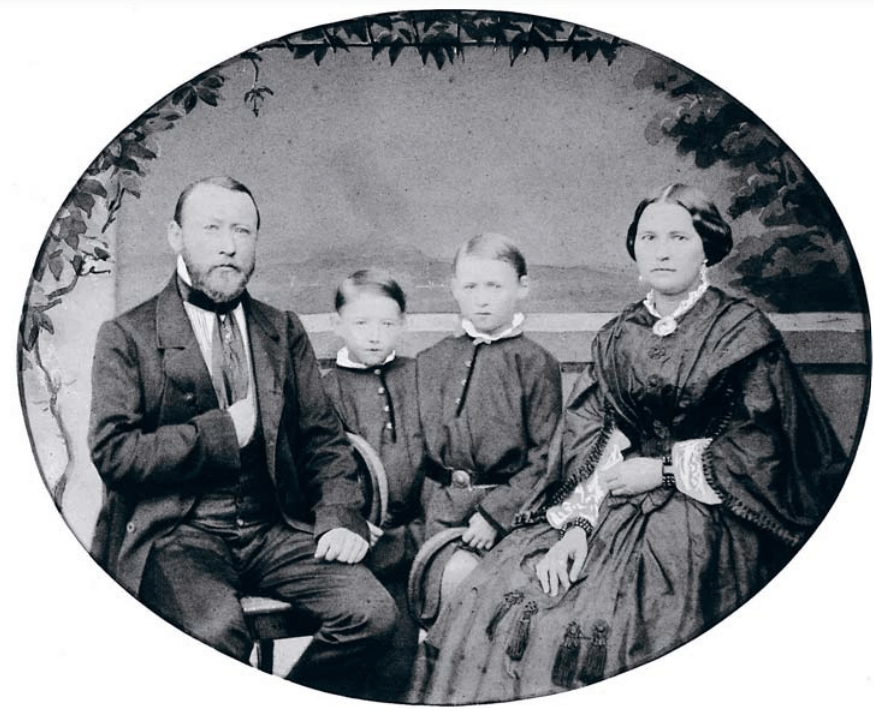Beltz Verlag is one of the best-known and most renowned publishing houses in Germany. Its history goes back to the 19th century, when Julius Beltz first founded a small book printing company and a short time later took over the publishing house Adolph Büchting. In the following decades, the young company developed into an important player on the German book market and made a name for itself as a publisher of educational, psychological topics and children’s literature.
Beltz Grafische Betriebe is part of the Beltz Group and produces for its own publishing programs and for many customers. The relationship between our publishers and the Beltz Grafische Betriebe print shop and bindery is a close and trusting one, which ensures that the publishing programs are produced quickly and efficiently at all times. Read this article to find out about the history behind the Beltz Group and the connection between Beltz Grafische Betriebe and Beltz Verlag.
Beltz Verlag: A family business with a long tradition
Founded in 1841 as a book printing company and always family-owned, the Beltz Group celebrated its 180th anniversary two years ago. Today, the company has a broad base and rests on four pillars consisting of Beltz Verlag (Weinheim), Campus Verlag (Frankfurt), Beltz Grafische Betriebe (Bad Langensalza) and Beltz Buchhandlung (Weinheim).
From book printing to the publishing business

As a trained printer, Julius Beltz founded the book printing company in the tranquil town of Langensalza in Thuringia at the age of just 22. Beltz himself not only developed a passion for printing. He was also politically savvy and shared the liberal sentiments of his time, even in public.
His company grew steadily in the years following its foundation, without making any great leaps. This development led to the acquisition of shares in the publishing house Adolph Büchting, which enabled Beltz to enter the publishing business. Initially with a broad program in the fields of history, drawing, geography, mathematics and religion, the company concentrated on specialist educational literature in the following years. At the beginning of the twentieth century, Beltz achieved a level of fame that extended beyond the Langensalza region.
Under the sign of war: the first half of the 20th century
The First World War blocked the upswing of Beltz Verlag and the printing company just as it was beginning to take off. Success stagnated. After the end of the war, however, the company recovered rapidly and quickly developed into an important German publishing house specializing in education. Works such as the five volumes of the “Handbuch für Pädagogik” or the semi-monthly publication “Die Volksschule” established the publishing house on the national book market and made it the market leader in educational literature.
But the Second World War also left its mark. The company was characterized by constant and systematic monitoring. Almost all magazines had to be discontinued, and the number of employees at the publishing house was reduced from over 100 to 8 – a bitter setback for the once so successful company.
Rebuilding the company under Russian occupation in East Germany was not an option. The Beltz publishing house moved to Weinheim. The new start was slow and the company only made slow progress. Following on from the once successful magazine “Die Volksschule”, Beltz Verlag began publishing the quarterly “Zeitschrift für Pädagogik” in 1955, which from then on formed a decisive building block in the company’s upward development.
Succession planning and a wave of success
In 1961, Dr. Manfred Rübelmann, son of a local chemical entrepreneur, joined the company and after just two years took on the role of managing partner with personal liability. The childless Beltz couple adopted Manfred Rübelmann to secure the company’s succession.

To mark its 125th anniversary, the company opened a printing center with state-of-the-art printing presses in Hemsbach. In the following years, the up-and-coming company benefited from the increasing number of pupils at general education schools. This led to an increase in the number of teachers and lecturers who resorted to the relevant literature and thus gave Beltz Verlag a boost. In 1971, together with the editor Hans-Joachim Gelberg, the Beltz & Gelberg youth book program was founded, whose trademark became the bright orange.
Manfred Beltz Rübelmann drove the company forward with new projects, works and journals in the fields of education, psychology and educational science, expanded the book program and thus ensured a new upswing. Together with his wife Hildegard Beltz Rübelmann, who was responsible for founding the Beltz bookshop in Weinheim in 1982, he had a significant influence on the company’s current direction and thus made a decisive contribution to its success.
One of Manfred Beltz Rübelmann’s biggest projects at the beginning of the 1990s was the reacquisition of the parent company in Bad Langensalza by Beltz Verlag in the course of reunification and the resumption of activities in the printing plant there. The company now employed a total of 500 people and recorded its highest turnover to date.
Challenges of the modern age
The 2000s were characterized by further development and change. This included the integration of the sixth generation into the company. Since 1996, the four children of Manfred and Hildegard Beltz Rübelmann – Matthias and Ulrich Rübelmann, Christina Blum (née Rübelmann) and Marianne Rübelmann – have been co-partners of the holding company. After the unexpected death of the previous managing director Joachim Radmer at the age of only 46, Marianne Rübelmann was appointed as his former deputy managing director of Julius Beltz GmbH & Co. KG on October 1, 2004 and thus became the publisher of the publishing group.
As a result of the entrepreneurial challenges in the following decade, Marianne Rübelmann announced the merger of the two technical print stores in Hemsbach and Bad Langensalza in 2013. In the fall of 2014, the specialist journal “Psychologie Heute” celebrated its 40th anniversary, and in 2015 Beltz decided to take over the co-partner share in Campusverlag, with Marianne Rübelmann taking over the management at the same time. With the death of Dr. Manfred Beltz Rübelmann in the same year, an important decision-maker and a large part of Beltz Verlag was lost.
Beltz Verlag today
Today, Beltz Verlag is one of the best-known and most renowned publishers of educational and psychological literature in Germany. The publishing house also operates internationally and has made a name for itself as a publisher of books on topics such as coaching, psychotherapy and education policy. With its wide range of specialist literature, guides, teaching materials and books for children and young people, Beltz Verlag is an important partner for teachers, therapists, coaches, parents and anyone interested in education, upbringing and personal development.
And the integration of the seventh generation of the family-run company has already begun. In 2019, Paul Herrmann took over the management of the Weinheim bookshop, which has been undergoing constant modernization ever since. Last but not least, the establishment of a children’s corner and the remodeling of the premises last year brought a breath of fresh air to the bookshop.
The role of Beltz Grafische Betriebe
Beltz Grafische Betriebe has also welcomed a seventh-generation family member to the management level. Max Herrmann joined the print shop in 2021 as a management consultant and has been driving the company’s development and ensuring a broad portfolio ever since.
Today, the Beltz Group is based on four independent pillars. This ensures mutual support, a balance that makes it easier to overcome crises and risks, for example. This allows the company to react flexibly to changes and at the same time benefit from the strengths of the other pillars.

Beltz Grafische Betriebe as a permanent pillar of the Beltz Group
One of the pillars is Beltz Grafische Betriebe. They operate alongside the three other pillars consisting of Beltz Verlag, Campus Verlag and Beltz Buchhandlung as a completely autonomous and independent part of the group of companies and therefore form an important and indispensable part of the entire group of companies.
Each of the four pillars benefits from the stability of the company and at the same time restores stability to the corporate structure. For Beltz Grafische Betriebe, this is crucial for the expansion and further development of its machinery, among other things. Important investments, for example in new printing presses, can be offset in the short term, but offer the company great development potential in the long term. At the same time, such investments ensure the competitiveness and thus stable business of the graphic arts companies, which in turn benefits the other pillars of the Group.
The cooperation between Beltz Grafische Betriebe and the publishing house today
On the other hand, Beltz Verlag also supports Beltz Grafische Betriebe in a commercial sense. All of Beltz Verlag’s publishing products are produced in the print shop in Bad Langensalza.
The corporate concept was developed in 2011 to mark the Group’s 170th anniversary and is still in place today – albeit in a modified form and adapted to current developments. The comprehensive history of the Beltz Group can be read in the company brochure published to mark its 175th anniversary.


